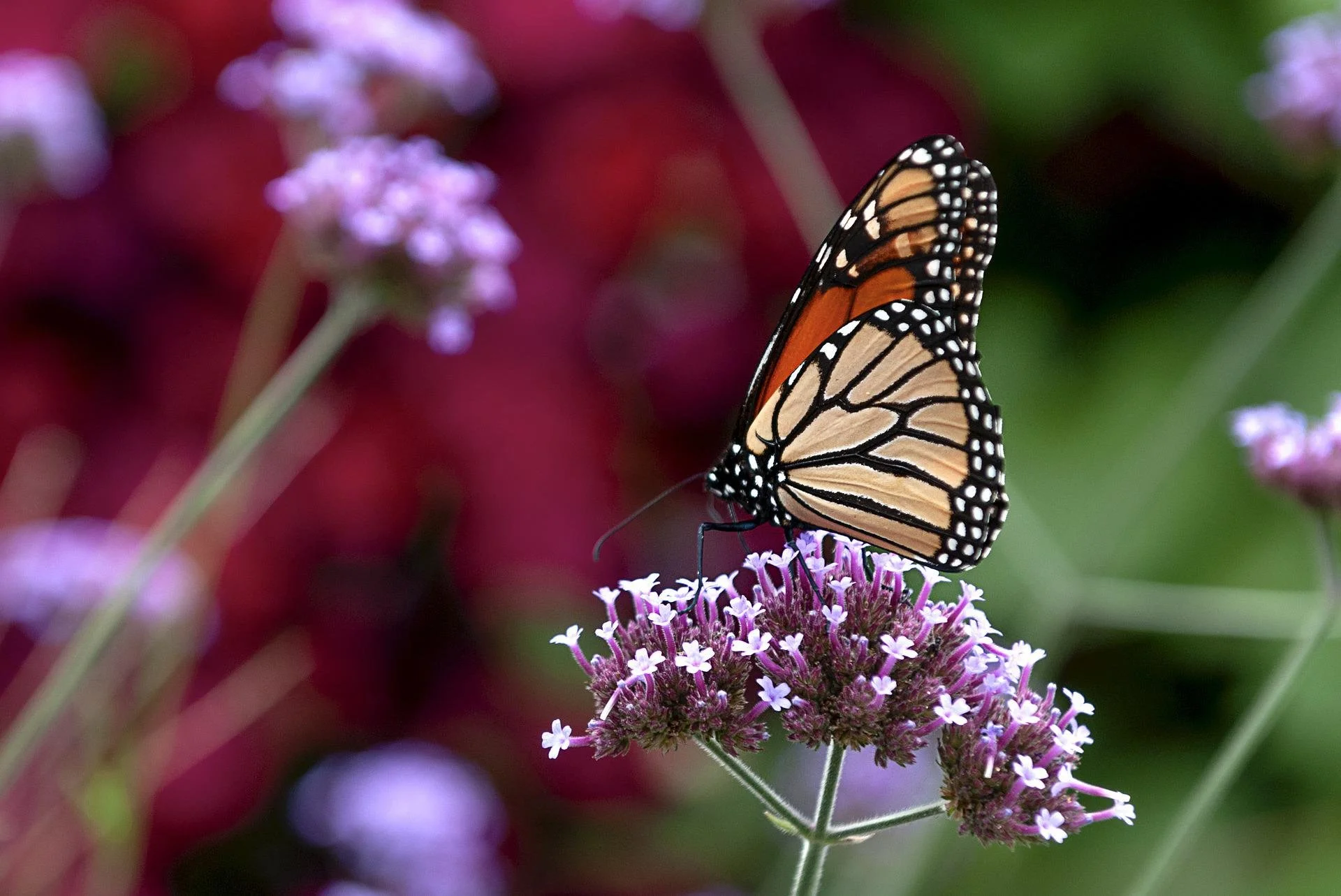broken butterfly
by Sarah Ives
“Mama, I found one,” squeaks my four-year-old, who recently decided that he is a mouse. “A monarch!” He points, jumping and squeaking, at the boardwalk. I follow his finger to what looks like a discarded candy wrapper flapping in the wind. But there it is: a single monarch with a broken wing.
That January morning we had packed the car with monarch books, binoculars, snacks, and my husband’s camera. The monarchs were back. Supposedly. And after an hour of driving from San Francisco to Santa Cruz, we are walking, searching, seeing nothing.
“I remember the trail being more like a corridor,” my husband insists. “The monarchs must be around the corner.” In his childhood memories, the green trees were painted orange with hundreds of thousands of migrating monarchs. Today, he looms over one broken butterfly with his fancy telephoto lens. He stands on his toes and arches his neck like an awkward swan, struggling to get far enough away to capture its little flops. The mouse-child bounces and squeals beside him.
At home that night, the monarch books remain piled in the corner, discarded like the parrot books and unicorn books that came before them, the real and the mythical blurring together in the mouse-child’s mind. “Rhinos tonight!” he squeaks and reaches for the bookshelf.
We learn about Fatu and Najin, mother and daughter, the only two northern white rhinoceros left on earth. Scientists tried to fertilize their eggs with frozen sperm from the last male of the species, dead in 2018. But their wombs were unable to carry a baby to term. The mouse-child sucks his thumb and looks passively at the page, his body wriggling deeper into my lap. “Trying to get back into your womb,” my husband jokes.
I close the book. “Why are you crying, Mama?” And then in the same breath, “What’s sperm?” Not now, I think.
That night, Fatu and Najin plod into my dreams with empty wombs. Just as in the children’s book, they stand on top of a pen-and-ink hill. Only now they are surrounded by pen-and-ink butterflies flapping their wings, unable to leave the ground. I wake to the mouse-child’s face next to mine. “I have to go potty.” Fatu, Najin, and the butterflies fade as I walk him to the bathroom, cold tile on bare feet: the real and the mythical blurring together in my mind.
The next day, I turn on my computer to record a lecture for the anthropology class I teach at a local community college. Today’s topic is disappearing languages. “One language is lost every 14 days,” I say to the computer, distracted by my image looking back at me. I feel as though I am looming over my own face with my husband’s telephoto lens, a lens designed for distance: a mountain or a tree full of butterflies. Instead, I am trying to bring into focus a self that has become indistinct with the passing of time, the birthing of children, and the endless blue lights of computer screens.
I describe the Sapir-Whorf Hypothesis. “Every language represents a unique way of seeing the world, of understanding space and time,” I continue. “English has three main tenses: past, present, and future. Hopi has two: lived reality and potential reality. English has 1.5 billion speakers; Hopi risks disappearing in one to two generations. What is lost when a language is lost?” I ask, rhetorically.
It’s always rhetorical these days. I have no students in the room with me because of a virus that refuses to disappear, that adapts to human efforts to kill it, and that, unlike Fatu and Najin, refuses to go extinct.
The next week brings “diablo winds” with their unsettling dry heat. That term first arose during the 1991 Oakland firestorm that killed 25 people and destroyed more than 3,000 homes. Diablo winds didn’t use to blow in the winter. I glance out the window to see something real, something other than the computer screen, and a sudden gust sends a swirl of colorful garbage—surgical masks and plastic bags—into the air. For a moment, it looks like a kaleidoscope of butterflies.
I finally get around to downloading the photographs from the fancy camera with the telephoto lens. There are some blurs of orange: the camera focused on the wrong things, the images not worth saving. And one photo of a monarch on a boardwalk shadowed by a bouncing four-year-old, my mouse-child, whose father’s memories of hundreds of thousands of butterflies slip from real to mythical.
Sarah Ives is a sociocultural anthropologist and author of the book, Steeped in Heritage: The Racial Politics of South African Rooibos Tea (Duke University Press, 2017).
As an academic, Ives has published in numerous peer-reviewed journals and edited volumes. She has also written for Sierra Magazine, National Geographic News, Sapiens, and The Conversation, among other outlets. Her correspondence has appeared in Nature, and her non-fiction writing has been featured as a “Beautiful Thing” in River Teeth: A Journal of Nonfiction Narrative.
You can find clips of her work at: www.SarahIves.com.
